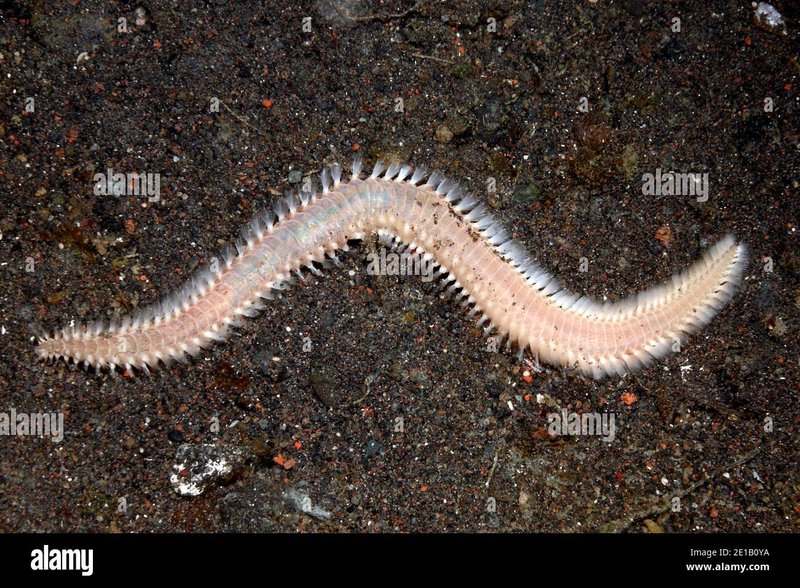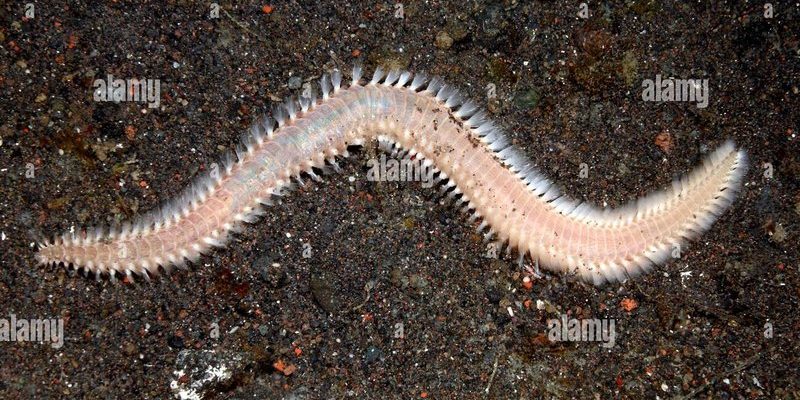
You might be wondering how large these critters can actually grow in your tank. After all, knowing their potential size—especially for those new to fishkeeping—will help you keep your tank balanced and happy. In this article, we’ll explore the maximum size bristle worms can reach in home setups, how to manage them, and why they’re more than just a nuisance.
What Are Bristle Worms?
Bristle worms belong to the polychaete family and are often found in aquariums and marine environments. They’re long, slender creatures covered in tiny bristles or setae that can give them a prickly appearance—hence their name. Picture them as the scavengers of the sea; they consume organic matter, helping to keep your aquarium clean.
In a typical saltwater tank, they can measure anywhere from a few inches to over a foot long! Most commonly, though, the average size you might encounter is about 5-8 inches. Here’s the thing: the more food available in your tank, the larger these worms can grow. If you overfeed your fish and leave debris, you’re essentially giving these worms a buffet!
While they can be beneficial in maintaining tank health, an overpopulation of bristle worms can lead to issues. If they grow too large or too numerous, they can compete with your fish or even consume smaller invertebrates. You definitely don’t want an oversized bristle worm making your tank feel like an episode of a nature documentary gone wrong!
How Do Bristle Worms Reach Their Maximum Size?
Bristle worms grow through a process called molting, where they shed their outer layer to make way for new growth. This is similar to how some reptiles shed their skin. In a healthy tank, you’ll often see them grow gradually. They thrive on uneaten fish food, detritus, and decaying organic materials—so a nutrient-rich environment boosts their growth.
A bristle worm can grow rapidly in the right conditions. If the water quality is good, with stable parameters like salinity, temperature, and pH levels, these worms can reach impressive lengths. Think about it like this: if you give a plant plenty of sunlight and water, it flourishes. The same goes for bristle worms!
But if you notice these worms growing larger than expected, it’s a sign that your tank might have excess nutrients. This situation can lead to a potential imbalance in your aquarium’s ecosystem. So, monitoring their size regularly can help maintain a healthy environment for your fish and plants.
Why Size Matters: Impact on Your Aquarium
You might be thinking, “Why should I care about how big these worms get?” The size of bristle worms in your tank can affect more than just aesthetics. Large populations can significantly impact the overall health of your aquarium. For instance, they can compete with your fish for food resources, leading to malnourished fish or a decline in their health.
Also, as these worms grow, they may begin to prey on smaller tank inhabitants. If you have delicate invertebrates like shrimp or smaller fish, bristle worms could pose a genuine threat. Their bristle-covered bodies make them ideally suited to grab and hold onto prey. It’s kind of like having a raccoon rummaging through your trash—it might do some good, but you don’t want it messing with your pets!
Managing the size of bristle worms involves maintaining good tank conditions and not overfeeding. If you notice they’re outgrowing their welcome, it might be time to address the overall health of your aquarium.
Managing Bristle Worm Populations
If you’re dealing with too many bristle worms, here are some strategies to keep their population in check:
- Control Feeding: Overfeeding is a primary cause of bristle worm overpopulation. Make sure you only feed your fish what they can finish in a few minutes.
- Keep a Clean Tank: Regular maintenance, like vacuuming the substrate and removing decaying matter, can help limit the food sources for these worms.
- Introduce Natural Predators: Some fish species, like wrasses, enjoy snacking on bristle worms. Adding compatible fish can help keep the worm population manageable.
- Manual Removal: If necessary, you can physically remove larger bristle worms using gloves to prevent their bristles from irritating your skin.
Remember, moderation is key! A few bristle worms can be beneficial, acting as scavengers and helping to keep your tank clean. But when their numbers soar, it’s time to take action.
Recognizing and Addressing Issues with Bristle Worms
So, how can you tell if your bristle worm situation is getting out of hand? Here are some signs to look out for:
- Visible Increase in Size: If you see worms that are unusually large, it might indicate that they’re thriving on excess food.
- Decline in Fish Health: If your fish seem lethargic or are losing weight, those bristle worms may be part of the problem.
- Missing Tank Inhabitants: If you notice smaller fish or invertebrates disappearing, those bristle worms could be the culprits.
To tackle these issues, start with thorough tank maintenance. Regular water tests can help ensure your parameters are stable, and keeping the substrate clean minimizes waste. If your fish are struggling, consider introducing natural predators or adjusting your feeding routine.
The Bottom Line on Bristle Worm Size
Understanding the maximum size bristle worms can reach in your home setup is essential for maintaining a harmonious aquarium. While they can grow up to a foot long, it’s their population and health that can truly impact your tank. By keeping tabs on their growth and implementing preventive measures, you can enjoy the benefits they offer without letting them dominate your aquatic environment.
Ultimately, it’s all about balance. You want your tank to be a thriving ecosystem, where your fish and worms can coexist comfortably. Just keep an eye on those bristle worms—they might be tiny heroes, but they don’t need to be the giants of your aquarium!

